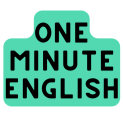Practice English or Spanish with AI here
Generally, you do not use a comma before the phrase “so that,” whether it is interrupted or uninterrupted. You would use a comma before “so” alone in some circumstances.
Here is how to know when to use a comma before “so” and the different uses of “so” and “so that” phrases.
How to Use So and So That
“So” is a word that can function in many different ways in the English language, but its most common uses (as we’re focusing on them) are as a conjunction, a magnifier, and, in the phrase “so that,” an expression of intention.
“So” (or “so…that”) can also be used as a magnifier or intensifier, which adds emphasis to an adjective.
The dog was so young that its eyes were not yet open.
OR
The dog was so young, its eyes were not yet open.
Above, “so” is used to emphasize “young,” and make it more intense than it would normally be. Used in this way, “so” and the adjective are usually followed by an explanatory phrase. This phrase can be introduced with “that,” but it doesn’t need to be.
The uninterrupted “so that” is used to convey purpose or intent. It’s a synonym phrase for “in order to,” and can be used interchangeably.
I studied for my test so that I could pass.
OR
I studied for my test in order to pass.
Both phrases explain the intent of “I studied for my test” as “to pass.”
“So” alone can be used as a coordinating conjunction. Coordinating conjunctions are words that link sentence parts together.
The roads were flooded, so the schools were closed.
In this example, “so” connects the two phrases, “the roads were flooded” and “the schools were closed,” and shows the relationship between them.
Where to Put Commas with So and So That
So, how do commas come into play with “so that” and “so…that?”
When using the uninterrupted “so that,” there is no need to put a comma before or after the phrase. Its purpose is connection rather than continuation; putting a comma in either position would cause an unnatural break in the sentence’s rhythm.
CORRECT: I ran so that I would not be late.
INCORRECT: I ran, so that I would not be late.
Try reading the above sentences out loud. You’ll notice that the first sentence sounds more natural than the second, as it reads as a continuous thought.
When using “so…that,” the rules are the same. It’s an intensifying phrase meant to pull a sentence together; putting a comma before, after, or in the middle of the phrase would sound strange to the reader.
CORRECT: The wind was so strong that my hat blew away.
INCORRECT: The wind was, so strong that my hat blew away.
INCORRECT: The wind was so strong that, my hat blew away.
When “so” is used alone as a coordinating conjunction, you would put a comma before it. In these cases, “so” is connecting two different ideas that still deserve their own space.
CORRECT: The sun is out, so you need sunscreen.
INCORRECT: The sun is out so you need sunscreen.
The second sentence sounds more rushed and potentially confusing. The first sentence allows the reader to pause between ideas.
Conclusion
A good rule of thumb for finding the correct punctuation of a sentence is reading it out loud. The purpose of a comma in a sentence is to create a small break or pause, allowing the reader to know that an idea has ended or a phrase has a certain rhythm or emphasis.
If it would make sense to pause before a phrase, you would insert a comma. If not, there is no need to add one. Try your sentence with and without a comma to see which sounds more natural. This is true of “so that” phrases and many more.
- 10 Words or Phrases “To Make Her Feel Special” - October 16, 2024
- Synonym Generator - September 11, 2024
- [BrutallyHonest] Langua AI Review – Can you learn a language with AI? - April 23, 2024

